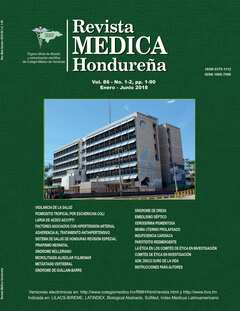DNA, life’s hard drive
Keywords:
Bioinformatics, Genomics, Hereditary diseases, Medical genetics, Nucleic acidsAbstract
Throughout the last two centuries medicine was nourished with biochemical discoveries that promoted the understanding of physiopathological mechanisms and facilitated the development of therapeutics. On the other hand, in the present century we entered the era of genomics and big data, so the study of the functions of DNA as an information management device is essential for the understanding of the new precision, personalized genomic medicine. In this review, DNA is analyzed as a computer device with three functions: storage, expression and transmission of the information accumulated throughout the phylogeny in the form of nucleotide sequences. Each of these functions is described by comparing it with the information handled by a computer or a society, and examples of pathologies arising from the failure to properly perform such functions are provided. The bibliographic compilation is extensive and includes the most relevant articles corresponding to each topic, both historical and of the state of the art.
Downloads
504




